How To Fix My Missing or Loose Tooth Filling
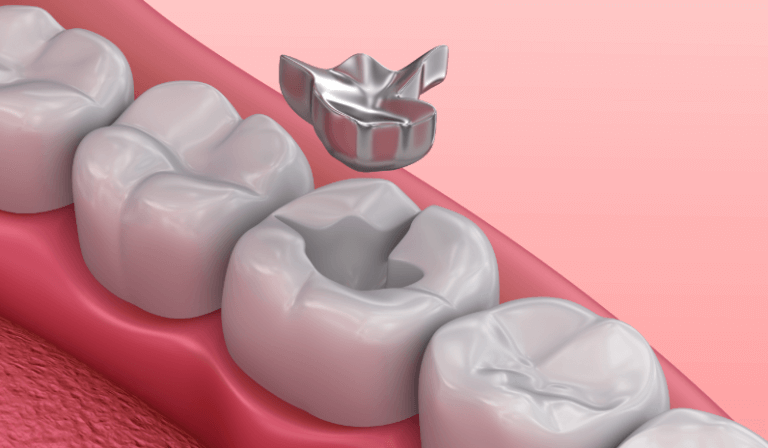
What Causes A Tooth Filling To Fall Out?
If a piece of your Tooth filling is loose or lost, no need to panic. There is a good chance that the dentist can replace it with a new dental filling. First, it’s important to note that it is not uncommon to lose a dental filling. Fillings can fall out for any number of reasons:
- New areas of dental decay around the loose or lost filling.
- Chewing on hard or crunchy foods.
- Bruxism, commonly known as teeth grinding, or teeth clenching.
- An accident or trauma to your tooth.
If a filling falls out, the first step is to contact your dentist to set up an appointment. In the meantime, it is important to protect the exposed tooth.
What Can The Dentist Do To Fix My Loose Or Lost Tooth Filling?
In most cases, the dentist can repair the loose or missing filling with a brand new filling.
If the dentist determines that a new filling has a high chance of becoming lost again, they may recommend you repair the damage with a porcelain veneer or dental crown.
- A Porcelain Veneer is a ceramic facing that is glued on the front face of teeth; taking advantage of increased surface area for better bond strength and the high strength of porcelain for better material durability. They are commonly done on front teeth for cosmetic purposes.
- A Dental Crown is a tooth-shaped cap that has more circumferential retention and will therefore last longer. Crowns are commonly chosen when posterior teeth are involved or if a tooth is too small or weak for veneers to work.
If you are also experiencing severe tooth sensitivity or dental pain, this often means that the nerve space inside the tooth has been exposed or infected with dental decay. Tooth pain would require Root Canal Treatment in addition to a filling and/or crown.
In rare cases, if the damage is very severe and cannot be repaired with a traditional filling, veneer, or crown; the dentist may discuss tooth replacement options such as Dental Implant or Dental Bridge.
What Do I Do If My Filling Is Loose Or Lost?
If a dental filling is loose or lost, contact your dentist right away to make an appointment. You may be able to replace the loose or lost filling on the same day or within a few days. If you can’t get to the dentist immediately, you should take extra care of the tooth. Here are some steps you should take to protect the tooth:
- Keep the area as clean as possible. This is to prevent bacteria from attacking the exposed tooth surface. Brush and floss regularly, ideally after every meal. You can also swish with mouthwash or salt water for a clean antibacterial effect.
- Be careful to not eat or chew on the affected side. To prevent further pain or damage to the tooth, favor using the opposite side of your mouth.
- Avoid hot and cold food and drink if the tooth is sensitive or painful. Keep the food and drink you eat lukewarm or room temperature.
- If the tooth is sharp and is cutting your lip or tongue, cover the area with sugar-free gum, orthodontic wax, or an over-the-counter dental cement.
- If your teeth are sensitive or painful, take pain medication. Acetaminophen (Tylenol), and/or Ibuprofen (Advil) can provide a temporary relief and is available over the counter at your local pharmacy. Speak to your local pharmacist or dentist for a recommendation of what is right for you. The absolute maximum dose that I recommend patients take for the worst dental pain is 600mg ibuprofen with 1000mg acetaminophen every 4 to 6 hours.
- For direct pain relief on the exposed tooth and gum, apply clove oil or a topical numbing agent like Orajel.
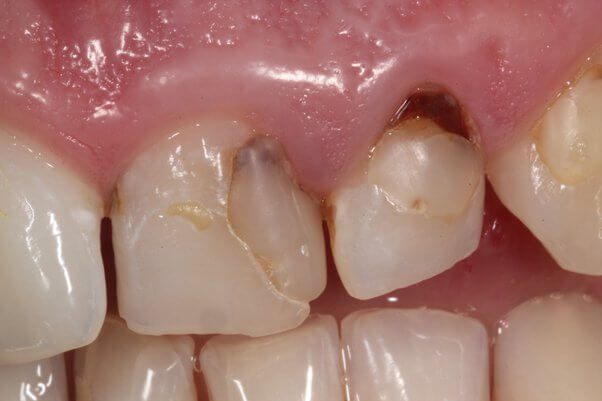
Whether it is an amalgam filling, composite resin filling, or glass ionomer filling, the cost of any of these Dental Fillings are similar and will depend on the location of the tooth (anterior, bicuspid or molar), as well as the size of the filling, which is translated as the number of “surfaces” involved. Imagine each tooth as a 5 surface box. Each “surface” that gets incorporated will dictate the size (and overall cost) of the tooth filling. Therefore, the cost of a filling can range between $200-460. The codes relevant to dental fillings in the Ontario Dental Association’s Suggested Fee Guide appear as follows:
Permanent Anteriors:
- 23111 – One surface: $200
- 23112 – Two surfaces: $250
- 23113 – Three surfaces: $300
- 23114 – Four surfaces: $370
- 23115 – Five surfaces (maximum surfaces per tooth): $390
Permanent Bicuspids:
- 23311 – One surface: $220
- 23312 – Two surfaces: $275
- 23313 – Three surfaces: $330
- 23314 – Four surfaces: $400
- 23315 – Five surfaces or maximum surfaces per tooth: $420
Permanent Molars:
- 23321 – One surface: $240
- 23322 – Two surfaces: $300
- 23323 – Three surfaces: $360
- 23324 – Four surfaces: $440
- 23325 – Five surfaces or maximum surfaces per tooth: $460
Dental Fillings are considered a basic service under all dental insurance plans and should be covered to your maximum insurable limit, but be sure to find out from your dental insurance plan provider how much you are eligible for before going ahead with dental treatment. Our fees are consistent with the ODA Fee Guide.
We also think you’ll like…
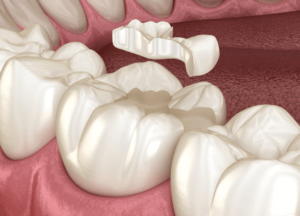
Porcelain Inlay
Porcelain Inlay What Is A Porcelain Inlay? A Porcelain Inlay is a type of dental restoration crafted from high-quality, biocompatible porcelain material. These restorations are
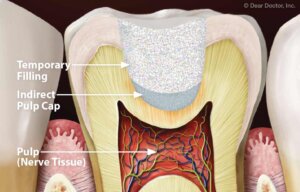
Indirect Pulp Capping
Indirect Pulp Capping What Is Indirect Pulp Capping? Your dental health is a crucial part of your overall well-being, and it’s essential to stay informed
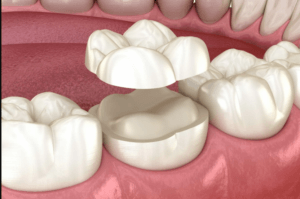
Porcelain Onlay Recementation
Porcelain Onlay Recementation What Is Dental Onlay Recementation? A Porcelain Onlay is a type of dental restoration that is used to repair a damaged or
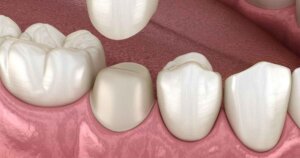
Fallen Out Dental Crown
Fallen Out Dental Crown What Is A Fallen Out Dental Crown? A dental crown is a type of dental restoration that is placed over a
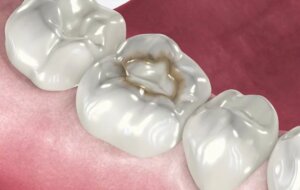
Loose Tooth Filling
Loose Tooth Filling What Is A Loose Tooth Filling? A dental filling is a common treatment used to fix a tooth that has been damaged
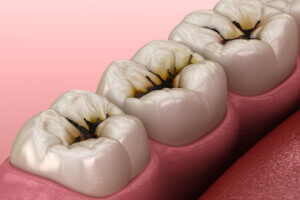
Cavity
Cavity What Is A Cavity? A Cavity, also known as dental caries, is a common dental problem that affects people of all ages. It is

